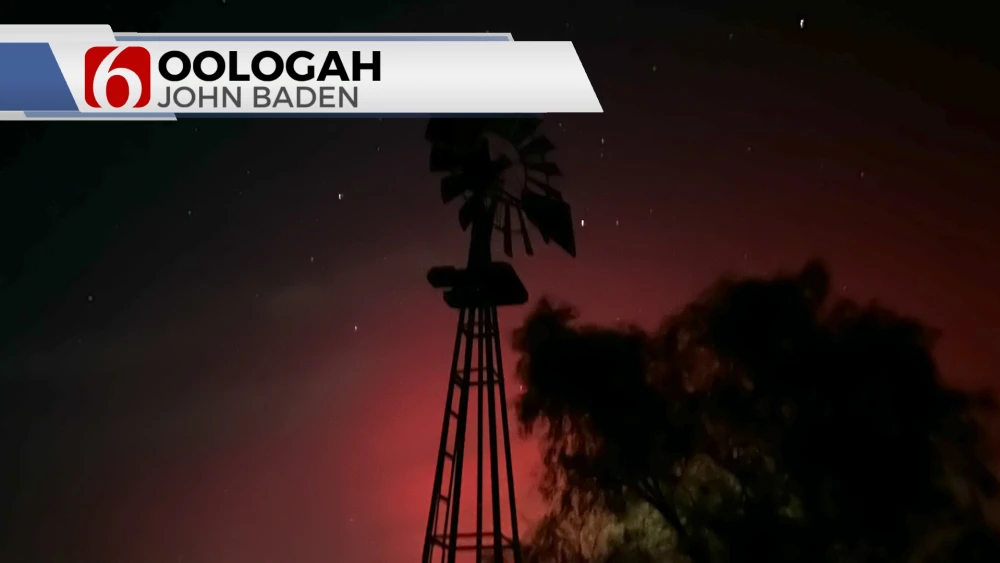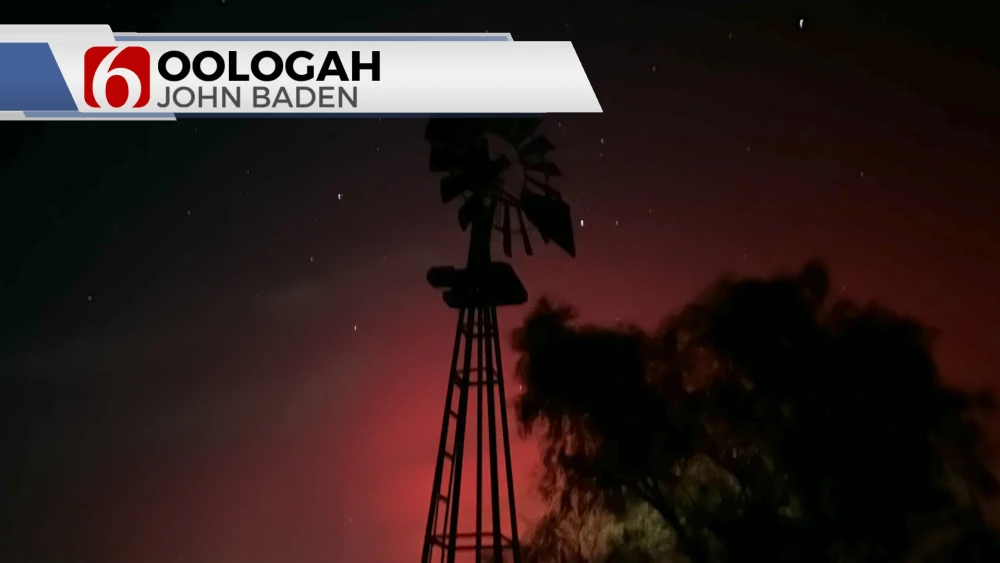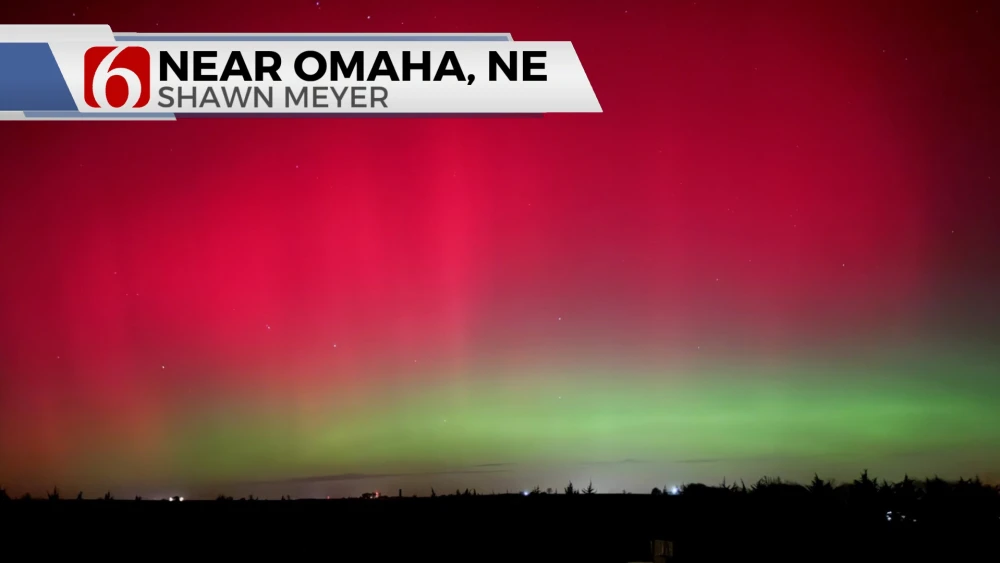TULSA, Okla. –
Some skywatchers across Green Country got lucky overnight as a burst of charged particles from the Sun moved toward Earth, allowing the Aurora Borealis to appear farther south than usual. With only partly cloudy skies, we received several reports and pictures of the northern lights that were visible across part of Oklahoma.
What’s behind the lights?
The aurora happens when electrically charged particles, mostly electrons and protons emitted by the Sun, are accelerated toward Earth and guided along the planet’s magnetic field lines into the upper atmosphere. Once there, they collide with atoms of oxygen and nitrogen, creating light emissions that appear as curtains, arcs, or waves of color in the night sky.
These particles often arrive after large eruptions on the Sun, such as coronal mass ejections (CMEs) or strong solar wind streams, which disturb Earth’s magnetic field in what’s known as a geomagnetic storm.
How strong is the storm right now?
Currently, the storm is rated G4 (Severe) on the NOAA Space Weather Prediction Center’s geomagnetic storm scale. A G4 rating means the aurora may be visible much farther south than usual, making Tuesday overnight an especially good time to step outside and look north for a rare display.
These storms can also affect technology and infrastructure. Power grids may experience voltage fluctuations, satellites and GPS systems can be disrupted, and high-frequency radio communications may be degraded.
What to watch for Wednesday night into Thursday morning
Forecasters with the NOAA Space Weather Prediction Center say the next wave of the geomagnetic storm is expected to bring elevated aurora activity on Wednesday night into early Thursday morning. While the exact timing and visibility remain uncertain across Oklahoma, conditions suggest another chance to catch the northern lights may remain possible.



































